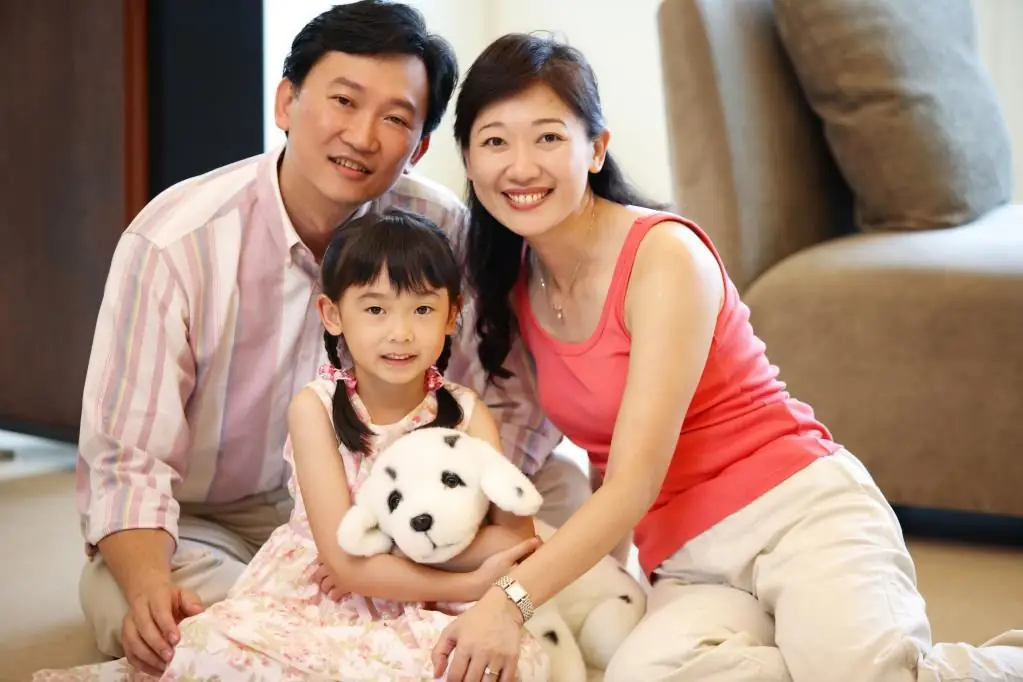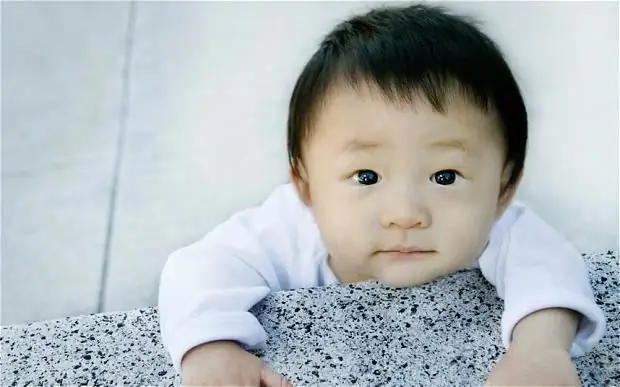- Author Henry Conors [email protected].
- Public 2024-02-12 02:43.
- Last modified 2025-01-23 09:07.
Chinese costumes, otherwise called "hanfu", are very peculiar, like the culture of the country itself. They differ not only from clothes customary in Europe, but also from their Asian counterparts, albeit a little closer "in spirit".
During the existence of the Celestial Empire, approximately 56 ethnic groups have formed on its territory, each of which has its own traditions and, of course, clothing styles.
In fact, the Chinese costume is an integral image, formed from individual elements of the outfits of various ethnic groups.

History of Appearance
In itself, the emergence of traditional clothing occurred a very long time ago, a little more than two thousand years BC. e., when the population of the Celestial Empire learned to make various fabrics from silk, hemp and cotton.
A characteristic feature of the robes was the cut, the same for all classes, and Chinese costumes differed, in fact, only in the quality of the material, the sophistication of patterns and other "decor". At the same time, most of the solemn elements developed from everyday dresses, something, on the contrary, lost its status and passedfor public use.
The history of the Chinese costume, which was the prototype of the current one, began after the Xinhai Revolution of 1911, which overthrew the Qin dynasty. The official clothes of the high and middle classes, the decor of which had a symbolic and hierarchical meaning, have gone out of use. Then the traditional women's skirt sank into oblivion, making the outfits of Chinese women hardly distinguishable from men's.

All traditional Chinese costumes are oar and are divided into two types according to design features. Today, "hanfu" is worn only for solemn events, but communities have appeared in the Celestial Empire that are reviving this type of clothing.
Costume Types
The most common type is called "kimono". Its characteristic feature is a rather simple cut: the shelves and the back are made of two canvases of the same length, with a fold in the area of the shoulder line. The central seam on the back and the absence of longitudinal seams on the shoulders, as well as rounded cutouts just below the armpits, make it possible to distinguish a kimono from other clothes.
This type of garment has a flared side seam or extra gussets to make it more spacious. Another recognizable feature is the round neckline and stand-up collar, the height of which depends on fashion trends.
Usually, the edges of the collar, sleeves and hem are trimmed with silk braid.

The second type of such clothes practically does not differ from the first, except for the presence of longitudinal seams on the shoulderlines.
At the same time, a Chinese folk costume of any type can have both a symmetrical and asymmetric cut, i.e. the sides of the shelves either meet end-to-end or overlap. At the same time, there are also fasteners that hold the floor and are located on the right at the base of the neck.
Waist garments (top and bottom pants) do not differ in cut. It is always straight and without pockets, the legs are wide and connect at an angle of more than 90 degrees. Worn on a person, such harem pants can reach the armpits due to an additional strip of fabric - a belt sewn at the waist level.
The shoulder and waist elements of the costume differ in seasonal varieties: the summer one has no lining, unlike the autumn-spring one, while the winter one is completely sewn on quilted cotton.

Meaning of colors
Different peoples of the world interpret the meaning of flowers in different ways, and China is no exception. Moreover, during the reign of the Zhou Dynasty, Chinese folk costume showed the social status of its owner by the width of the sleeves, the length of the robe and decorations.
At that time, the color scheme of the dress was regulated by the rank held. So, for example, the imperial family dressed in yellow, seasoned warriors in red and white, and the young wore blue. The dignitaries were given brown suits.
The meaning of shades has been preserved to this day. So, red means triumph and success, it is attributed to the elements of fire; yellow - the element of earth, fertility and prosperity; blue was more associated with nature, wisdom andthe unpredictability of the wind, white was associated with cold and metal, therefore it meant death and mourning, and brown spoke of humility and humility wearing it.
Symbolism of patterns
Women's Chinese costumes differed from men's in the presence of elaborate patterns with deep meaning. The most popular images were peach (longevity), orchid (knowledge) and peony (we alth).
Embroidery with flowers also symbolized the seasons: plum - winter, peony - the beginning of spring, lotus - summer and chrysanthemum - autumn. This interpretation of ornaments has survived to the present day, although it is not presented here in full, as is the list of possible patterns.






